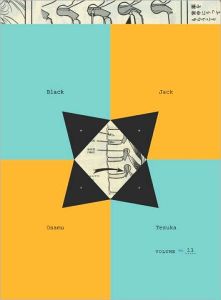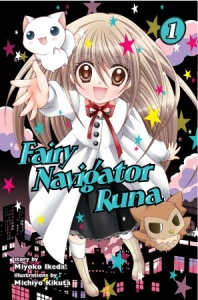Before I get into this week’s ComicList, I wanted to do some linkblogging.
There are two pieces celebrating the CMX catalog. Over at Mania, a quartet of writers compiles a list of “20 Must Have CMX Manga.” The Good Comics for Kids crew focuses on tween- and teen-friendly titles in “The GC4K Guide to CMX Manga.” Pieces like this are important, as DC has already dismantled its CMX web site, and all links to title information now go to a listing for the second issue of the Brightest Day mini-series. That strikes me as both telling and tastelessly ironic.
Over at The Beat, Rich Johnson takes manga’s pulse in an interesting overview. Johnson was DC’s Vice President of Book Trade Sales Sales during the early days of CMX before helping launch Yen Press for Hachette. Over at Robot 6, Brigid (MangaBlog) Alverson examines some of Johnson’s points, finding cause for disagreement. I’m particularly smitten with this passage:
“The graphic novel market boom of the early 2000s was due in part to the fact that publishers started serving the other half of the population. For a long time there were no comics for girls; then suddenly, there were, and the girls bought them. Dismissing their tastes as Rich does (or by complaining about comics being too pink and sparkly) ignores the fact that their money is just as good as any Dark Horse fan’s. Certainly, the opening of the manga market to more literary titles is a welcome development, as is the fact that many indy publishers are now embracing manga. That’s the kind of book I like to read. But the comics market is much bigger than me and my tastes. Girls like to read about schoolgirls with superpowers. You can tell them that’s stupid, or you can publish comics they like (keeping in mind that even genre fans can distinguish between a good comic and a bad one). One of those is a winning business strategy, and one isn’t.”
In the comments, Melinda (Manga Bookshelf) Beasi helps demolish the initial argument about the declining demand for comics for girls and the underestimated relevance of piracy with some page-view figures from scan sites. Those two birds never stood a chance!
Want some manga for grown-ups? Viz provides with the eighth volume of Naoki Urasawa’s 20th Century Boys, which is my favorite Urasawa title to be released in English so far. It feels like it should be able to save a category, you know?
In the mood for something in the classic vein? Vertical offers the 11th volume of Osamu Tezuka’s Black Jack.
Looking for a Japanese take on the comic strip? Tokyopop delivers the first volume of Kenji Sonishi’s Neko Ramen, about a cat who works in a noodle shop.
Wondering if Del Rey is still licensing manga? Well, there’s the debut of Fairy Navigator Runa, written by Miyoko Ikeda and illustrated by Michiyo Kikuta. It originally ran in Kodansha’s Nakayoshi shôjo magazine and is about one of those pesky magical girls.
I might not be finished with my Marvel spite purchases. After seeing some preview pages from the first issue of Secret Avengers, written by Ed Brubaker and illustrated by Mike Deodato, I have to say that the idea of the Black Widow and Valkyrie fighting side by side is very much to my theoretical taste, as I’ve always liked those two heroines a lot. I do think someone needs to get Deodato a subscription to Vogue as quickly as possible, as he’s been drawing the same “sexy evening dress” since before Heroes Reborn.
Oh, and speaking of Marvel purchases, non-spite category, I entirely agree with this review of the second issue of Girl Comics, particularly for the nice things said about the contributions by Faith Erin Hicks and Colleen Coover. On the whole, I found the second issue to be much stronger than the first. I do totally hate the fact that the Scarlet Witch is painted as the villainess on the cover, but I’m sure that’s an inadvertent jab at my deep, deep bitterness on the subject.





